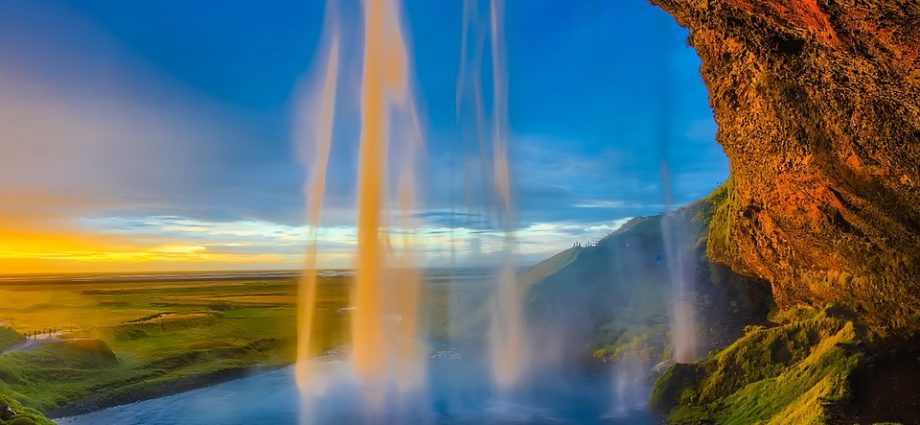An Adventurer’s Guide to Iceland
Iceland is a country of stark contrasts – hot springs and glaciers, darkness and the midnight sun, and tiny villages and modern cities. Known for its otherworldly landscapes, friendly locals, and unique culture, Iceland is a destination that should be on every adventurer’s bucket list.
In this guide, we’ll take a closer look at all that Iceland has to offer, from its breathtaking nature to its fascinating history and culture. We’ll also answer some of the most frequently asked questions about traveling to Iceland, and outline the top 10 must-see tourist attractions.
Iceland’s Natural Wonders
One of the main reasons people flock to Iceland is to experience its stunning natural scenery. From glaciers and geysers to volcanoes and waterfalls, this country is a nature lover’s paradise. Here are some of the must-see natural wonders of Iceland:
1. The Blue Lagoon: This geothermal spa is one of Iceland’s most popular attractions. The soothing, warm waters are a gorgeous shade of blue and are said to have healing properties. Visitors can soak in the mineral-rich waters, enjoy a facial or massage, or relax in the sauna.
2. Vatnajökull Glacier: This massive glacier in southeastern Iceland is the largest in Europe. Visitors can explore the ice caves, hike along the glacier’s edge, or take a guided snowmobile tour.
3. Gullfoss Waterfall: One of the most iconic waterfalls in Iceland, Gullfoss (‘Golden Falls’) drops 32 meters into a canyon. The falls are particularly stunning in the winter, when they freeze over and create a magical ice palace.
4. Thingvellir National Park: The site of Iceland’s first parliament in 930 AD, Thingvellir is now a national park with incredible geology and history. Visitors can hike along the Silfra fissure, snorkel in crystal-clear waters, or explore the ancient Viking ruins.
5. Geysir: This geothermal area in the southwest of Iceland is home to several hot springs and geysers, including the famous Strokkur geyser. Every 5-10 minutes, Strokkur spouts a column of hot water up to 40 meters in the air – a true natural wonder.
Iceland’s Cultural Highlights
Iceland’s Viking heritage and creative spirit are evident in its lively music scene, art galleries, and museums. Here are some of the most notable cultural highlights:
6. The Reykjavik Art Museum: This contemporary art museum showcases works by local and international artists. The building itself is a work of art, designed by Icelandic architect Sigurdur Gudmundsson.
7. The National Museum of Iceland: This museum offers a fascinating look at Iceland’s history, from Viking times to the present day. Visitors can see ancient artifacts, traditional costumes, and interactive exhibits.
8. Harpa: This stunning concert hall and conference center in Reykjavik is a masterpiece of modern architecture. Visitors can attend a concert, take a behind-the-scenes tour, or simply admire the building’s striking glass façade.
9. The Icelandic Sagas: These ancient texts are a cornerstone of Iceland’s literary history. Visitors can explore the sites mentioned in the sagas, such as the Thingvellir National Park and the Snæfellsjökull glacier.
10. Icelandic Cuisine: Iceland’s cuisine is rich in fresh seafood, lamb, and berries. Visitors should try traditional dishes like hákarl (fermented shark) and skyr (a type of yogurt). For a more modern twist, there are plenty of hip restaurants in Reykjavik serving up fusion cuisine and new Nordic cuisine.
FAQs About Traveling to Iceland
Q: When is the best time to visit Iceland?
A: The best time to visit Iceland depends on your interests. Summer (June-August) has 24 hours of daylight and warm temperatures, while winter (October-April) has shorter days and the chance to see the Northern Lights.
Q: Do I need a visa to visit Iceland?
A: Citizens of the EU, US, Canada, and Australia don’t need a visa to visit Iceland for up to 90 days.
Q: How much money should I budget for a trip to Iceland?
A: Iceland is a relatively expensive country, with prices on par with major Western European cities. Budget travelers should expect to spend at least $100 per day on food, lodging, and activities.
Q: What language do people speak in Iceland?
A: Icelandic is the official language of Iceland, but almost everyone speaks English fluently.
Q: Is Iceland safe for solo travelers?
A: Iceland is generally a very safe country, with low rates of violent crime. However, solo travelers should take the same precautions they would in any other destination, such as avoiding deserted areas at night and keeping an eye on their belongings.
Conclusion
Iceland is a destination that offers something for everyone – from outdoor enthusiasts to culture vultures. Whether you’re exploring the country’s stunning natural scenery or immersing yourself in its rich Viking history, there’s plenty to see and do. And with friendly locals, delicious cuisine, and unique accommodations (like staying in a traditional turf house), Iceland is a destination you’ll never forget.
